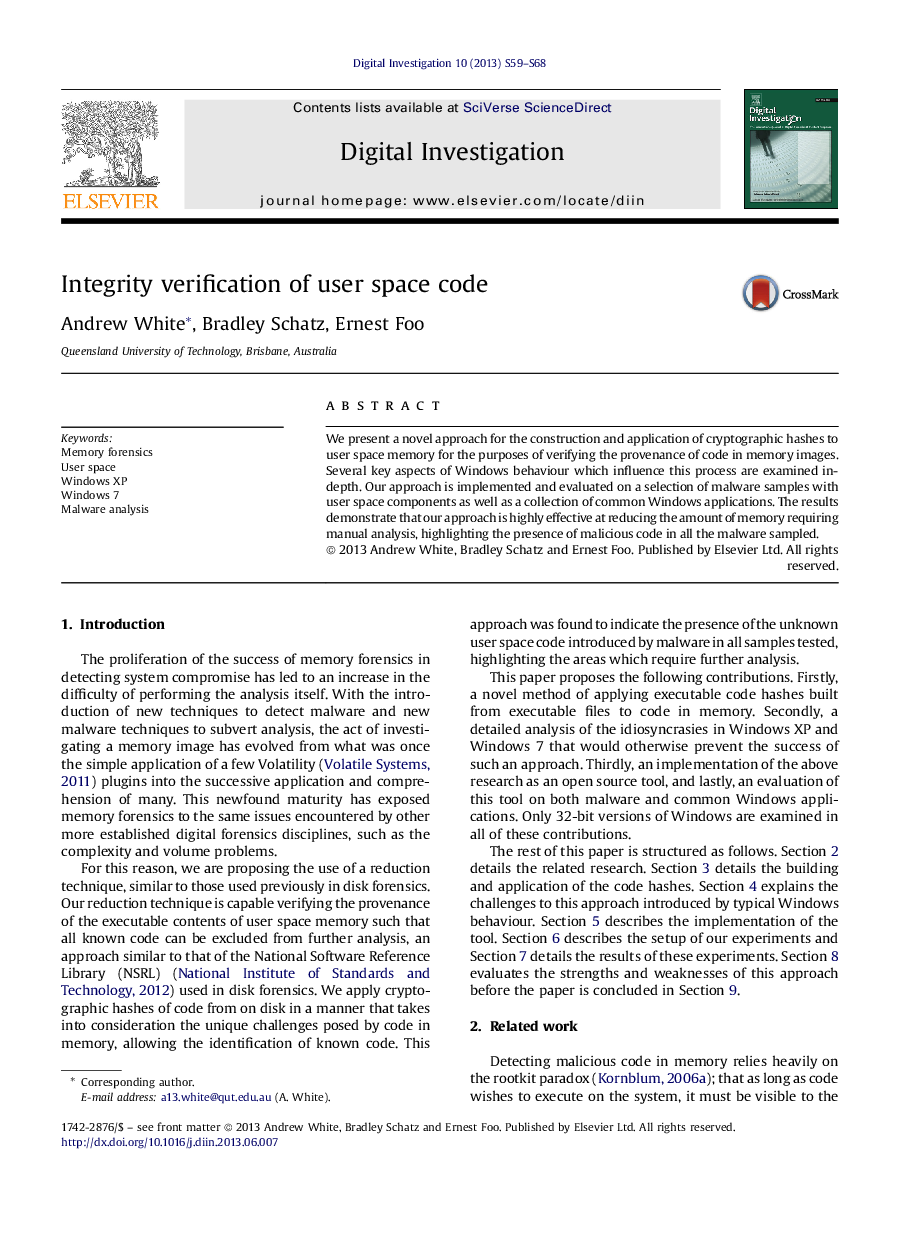| Article ID | Journal | Published Year | Pages | File Type |
|---|---|---|---|---|
| 458128 | Digital Investigation | 2013 | 10 Pages |
Abstract
We present a novel approach for the construction and application of cryptographic hashes to user space memory for the purposes of verifying the provenance of code in memory images. Several key aspects of Windows behaviour which influence this process are examined in-depth. Our approach is implemented and evaluated on a selection of malware samples with user space components as well as a collection of common Windows applications. The results demonstrate that our approach is highly effective at reducing the amount of memory requiring manual analysis, highlighting the presence of malicious code in all the malware sampled.
Related Topics
Physical Sciences and Engineering
Computer Science
Computer Networks and Communications
Authors
Andrew White, Bradley Schatz, Ernest Foo,
